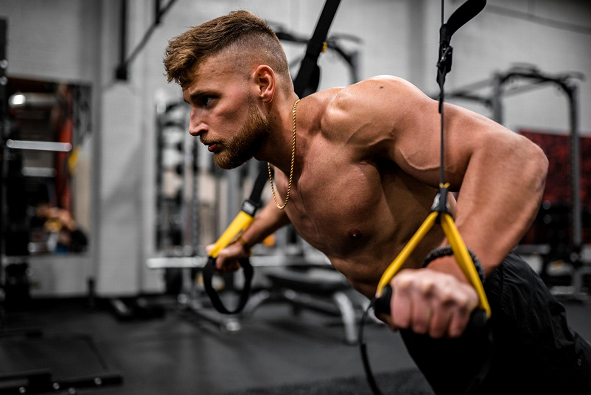Good posture and spinal stability are essential for good health and well-being. Unfortunately, bad habits such as sitting for extended periods or overworking certain muscles can lead to poor posture and spinal instability.
Exercises such as bridges, deadlifts, squats, and planks are all fantastic options for promoting better postures and spinal stability. In this article, we will explore the best workouts to promote better postures and spinal stability, from basic exercises to more advanced ones.
By implementing these exercises into your routine, you can strengthen your core, improve your posture, and promote spinal stability. So, let’s get started!
⦁ Pilates
Pilates is a form of low-impact exercise that can help to strengthen and align your spine, as well as improve your overall coordination and posture. It requires the use of postural awareness and controlled, precise movements that target the abdominal and back muscles.
This type of exercise can help to improve your balance, stability, and flexibility, as well as create a stronger, more balanced body. Additionally, pilates can help to improve your range of motion and reduce physical strain and stress on your body, thus making it easier to do everyday activities.
Practicing pilates regularly can also help to improve your overall health, as its gentle yet effective movements can help to promote circulation, reduce stress and tension, and increase energy levels.
⦁ Yoga
Yoga has been practiced for centuries to promote inner peace and physical strength, and it is highly beneficial for improving posture and spinal alignment. Many poses can help to strengthen the core muscles, promote better postural alignment, and reduce back pain.
Some of the best poses for improving posture and spinal health include the cobra pose, seated forward bend, warrior 1 pose, bridge pose, and stretches such as cat-cow.
Practicing these poses regularly can help to strengthen the core muscles, improve spinal health, and reduce back pain. Moreover, it can promote general health by increasing body awareness, improving balance, and increasing flexibility.
⦁ Lat Pulldown Machine Workouts
Lat pulldown machines are a great tool for promoting better postures and spinal stability. By targeting the muscles in your upper back, specifically the latissimus dorsi or “lats,” you can strengthen these muscles and improve your ability to maintain proper posture throughout the day.
In addition to improving posture, having a strong, stable spine is crucial for overall health and wellness. The lat pulldown machine engages not only the lats but also other muscles in the upper body, such as the biceps and shoulders.
⦁ Plank
Plank exercises, such as side plank, standard plank, and reverse plank, can be an effective addition to your postural training routine. The plank exercise is great for engaging the core muscles, strengthening the back and abs, and improving posture.
Practicing planks regularly, e.g., 3 to 4 times a week for a duration of 2 minutes each time, can help to improve your balance, coordination, and posture. Additionally, planks can also help to improve your overall body strength and endurance, as well as reduce the risk of injury.
⦁ Bridges
Bridges are an excellent exercise for promoting better spinal stability and postural strength. To perform a bridge, begin by lying on your back with your feet flat on the ground. Next, lift your hips towards the ceiling, so that your body forms a diagonal line from your head to your toes.
Hold this position for between 5-10 seconds before lowering your hips and resting for 10 seconds. Repeat this bridge exercise for one minute to ensure that you move slowly and squeeze your core muscles throughout the exercise, as this will help you to gain strength and flexibility in the back and around the spine.
⦁ Deadlifts
Deadlifts are a brilliant exercise for promoting better postures and strengthening the core muscles. Before attempting to lift the bar, ensure that you complete some dynamic stretches to warm up the body.
When it comes to performing the deadlifts, ensure that you adhere to good posture techniques to keep your back flat and your core muscles tightly engaged throughout the exercise. Beginners should stick to light or medium weights when getting started.
⦁ Supermans
Superman is a great workout that targets the lower part of your back and helps strengthen it. The exercise involves lying facedown on the floor and stretching your arms and legs out straight.
Next, slowly lift your arms and legs off the ground at the same time while keeping your head in line with your spine. Then gradually lower the thighs back down after holding this pose for two to three seconds. Do 10 repetitions of this exercise 3 times a week to promote better posture and spinal stability.
⦁ Bird Dogs
Bird dogs are another great exercise for helping promote better posture and spinal stability. You will begin this exercise on all fours, placing your hands under your shoulders and your knees underneath your hips.
Throughout the workout, keep your abs firm while simultaneously stretching one leg behind you and stretching the other arm in front. Before going back to the beginning position, remain in it for two to three seconds.
⦁ Side Planks
Exercises such as side planks strengthen the core and improve posture. As you begin this exercise, place your body in the position of a plank with your head to one side.
After your hips are in a single direction with your shoulders and feet, push down through the outside of your foot while tightening your abdominal muscles. After maintaining this position for 30 to 60 seconds, turn sides. For optimal results, try to finish 3 sets on each side twice or three times each week.
⦁ Cat-Cow Stretch
The cat-cow stretch is an effective way to loosen up tight muscles and improve your posture. Put your hands on your knees and keep your back flat while doing this stretch. On an exhale, slowly round your spine towards the ceiling, tucking in your chin.
Then, on an inhale, arch backward and drop your stomach to the floor while lifting your chest high. Repeat this stretch for at least 10 reps to experience the waist-lengthening effects of this exercise.
⦁ Child’s Pose
Child’s pose is a great exercise that counteracts the harm caused by sitting all day and slouching. Keep your spine neutral as you perform this stretch on your hands and knees. Exhale, then slide your hips back towards your heels as you lower down, bringing your forehead to the ground.
Raise your arms high, next to your head, with the palms facing up. For additional support, you can do this against the wall as well. Stay in this pose for at least 5-10 breaths and feel how it eases tension in the neck and spine.
⦁ Shoulder Blade Squeezes
You can strengthen your shoulder blade muscles by doing this exercise. Put your arms at the sides of your body and stand up straight. After three to five seconds of holding your shoulder blades together, release them. Then repeat the process ten times.
Make sure to keep your shoulders down while squeezing the blades together and maintain good posture throughout the exercise.
⦁ Wall Angels
Posture and spinal stability can be improved with wall angels. To do this exercise, stand face-to-wall with your head, shoulder blades, and lower back pressed against the wall.
Bend your arms and make a “fist” with each hand, then press your fists together at chest level in a goalpost position. Pull your arms out away from the body using only your shoulder blades while keeping the elbows pointed to the ground. When you’re at maximum range, hold for a few seconds before releasing. As you repeat the exercise, maintain a good posture.
⦁ Foam Rolling
Foam rolling can be an effective tool for improving spinal stability. Start by lying on the floor with a foam roller placed underneath your mid-back. Slowly roll your body up and down the roller, so that you get a massage through your entire back area.
Then, rotate or rock your body from side to side while pressing against the foam roller until you find any tight areas in need of additional attention. Hold these spots for 10-15 seconds before continuing to slowly roll up and down again.
⦁ Resistance Band Pull-Aparts
Exercises involving resistance bands can greatly improve posture and spinal stability. With arms slightly wider than your shoulders, loop a resistance band around both hands.
Keeping your arms straight, begin to slowly draw the band away from your body until your hands reach shoulder height. Then, slowly return to the starting position and repeat the exercise ten more times.
Conclusion
Promoting better postures and spinal stability is essential for good health and well-being. Spending 20 minutes a day, you can perform a full-body workout at home. Regularly performing exercises such as bridges, deadlifts, squats, and planks can help to strengthen the core, improve posture, and promote spinal stability.
With that being said, it is important to remember to warm up and stretch before doing any of the above exercises. Sticking to a regular exercise routine is the best way to ensure that you reap the most benefits from these exercises. Before beginning a new exercise program, seek the advice of your doctor.




